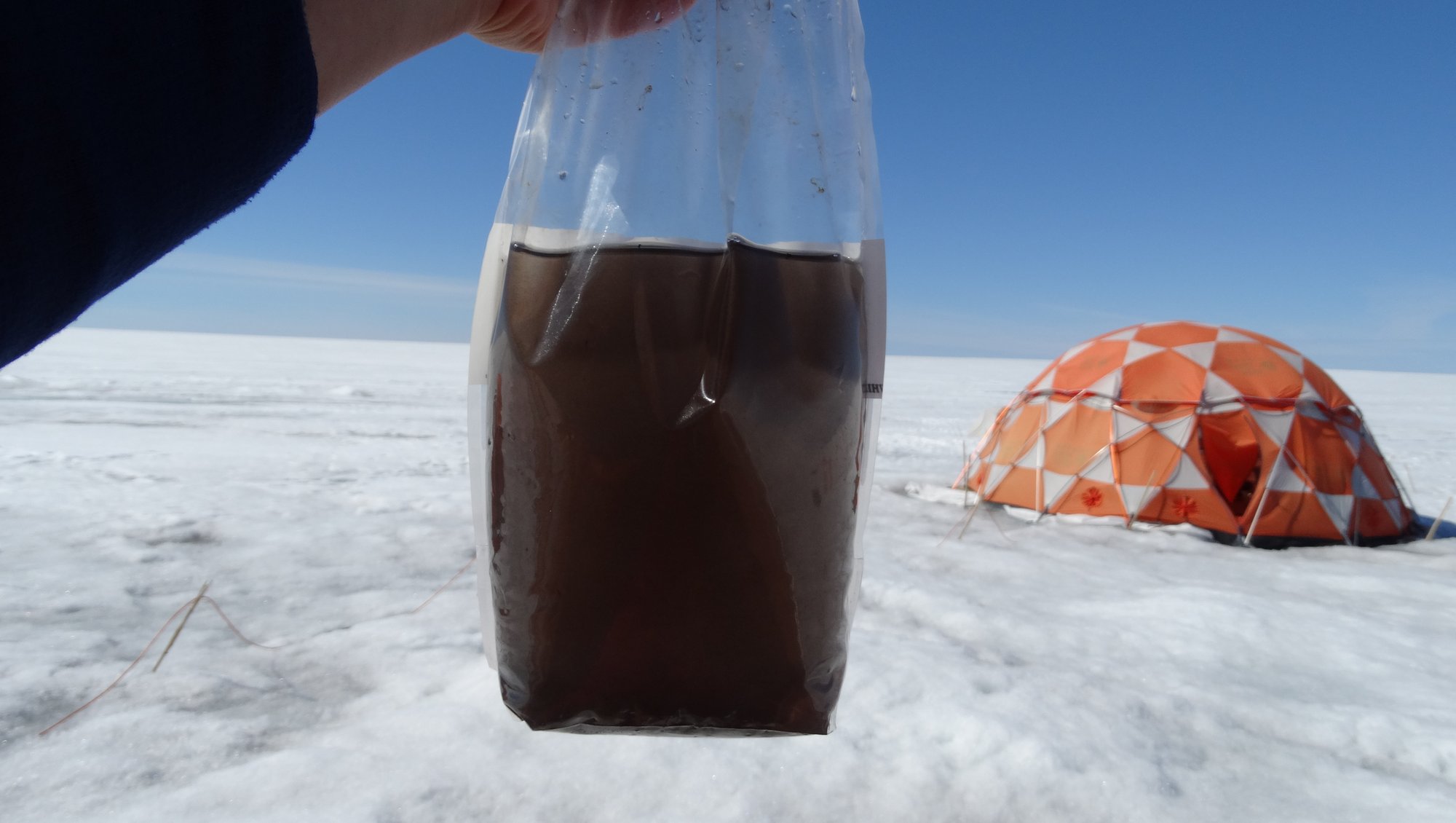Lurking in the snow and frost of Greenland’s ice sheet, mysterious giant viruses has been discovered. They share the ice with an abundance of algae, which means this is the first time these viruses – about which we know relatively little – have been found in such a habitat. But it’s not bad news (unless you’re an alga): it is thought that by infecting microalgae, the giant viruses may act as some sort of secret weapon in minimizing melt.
Just how giant are we talking? The viruses can’t be seen with the naked eye, but next to your regular viruses (which measure 20-200 nanometers) they’re comparatively massive. Giant viruses can grow to 2.5 micrometers – that’s 2,500 nanometers – making them up to 125 times bigger than normal viruses, and larger than most bacteria. They also have humongous genomes, containing around 2.5 million base pairs.
Previously, giant viruses have been found lingering in all sorts of environments, including the sea, soil, and even in humans. However, this latest discovery marks the very first time they’ve been found on surface ice and snow that is teeming with microalgae.
Here, the team behind the discovery believes, they could have an important role to play in regulating algal blooms and, consequently, in safeguarding the ice from accelerated melting.
When Arctic algae flourish in the spring, it darkens large swathes of the ice sheet, limiting its ability to reflect sunlight, in turn heightening the melt. This is bad news for the environment, which is why the freshly discovered giant viruses would be such a boon for protecting the ice if they can act as a natural algae control as the researchers suspect.
“We don’t know a lot about the viruses, but I think they could be useful as a way of alleviating ice melting caused by algal blooms,” first author Laura Perini from the Department of Environmental Science at Aarhus University said in a statement. “How specific they are and how efficient it would be, we do not know yet. But by exploring them further, we hope to answer some of those questions.”
The team collected samples from a variety of snow and ice habitats in the Greenland ice sheet, including dark ice, ice cores, red and green snow, and melting holes (cryoconite), before analyzing them for DNA and searching for specific giant virus marker genes. In almost all samples, they found sequences matching known giant viruses.

That’s not dirty water, it’s actually a sample teeming with microorganisms, including algae and giant viruses.
Image credit: Laura Perini
To make sure these had come from active viruses and not long-dead microbes, the researchers also extracted messenger RNA, or mRNA – a single-stranded molecule that contains the instructions from DNA that direct cells to make a protein – from the samples.
“In the total mRNA sequenced from the samples, we found the same markers as in the total DNA, so we know they have been transcribed,” Perini explained. “It means that the viruses are living and active on the ice.”
Your bog-standard viruses are not capable of transcribing double-stranded DNA into single-stranded mRNA. Instead, they have free-floating RNA strands in their cells that are activated when the virus infects its host and makes use of its machinery. But giant viruses are different. They are able to repair, replicate, transcribe, and translate DNA without the help of a host – although why that is, we’re not sure.
When it comes to giant viruses, there are plenty of other unknowns. What do these mysterious microbes infect, for example?
“Some of them may be infecting protists while others attack the snow algae. We simply can’t be sure yet,” added Perini.
But with further research, she hopes, we may better understand these pathogens and their potential role in protecting the ice from algae-accelerated melt.
The study is published in the journal Microbiome.
Source Link: Strange Giant Viruses Found Lurking On Greenland Ice Sheet